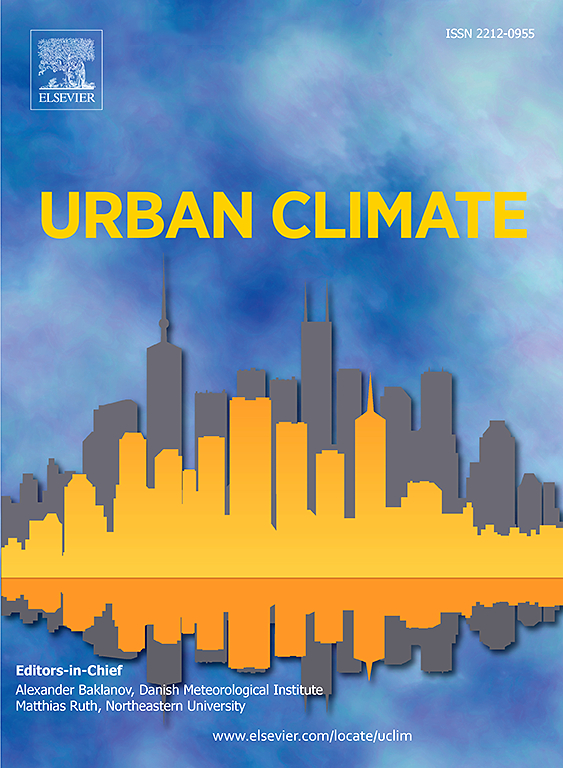Impact of drought on cooling capacity and carbon sequestration in urban green area
IF 6
2区 工程技术
Q1 ENVIRONMENTAL SCIENCES
引用次数: 0
Abstract
Through experimental observations of carbon and energy exchange in Urban Green Areas (UGA) using the Eddy Covariance technique we show that the vegetation air cooling capacity and carbon uptake are influenced by water availability: multivariate analysis shows that solar radiation (Rg) was the primary control factor in latent heat (LE) and CO2 fluxes followed by the air temperature (Tair) and Vapor pressure deficit (VPD). The relative importance of VPD was higher in correspondence of the year characterized by drought condition. The mature UGA investigated was a net carbon sink only during the summer season from June to September while on annual basis was a carbon source for all the years investigated. The summer average daytime UGA air temperature cooling potential ranged from 3.02 °C (± 1.4) during the wet season, to 2.1 °C (± 1.3) during the dry season. The city-scale application of the i-Tree model highlighted the reduced cooling potential effect of the UGA during dry periods, relative to those with better soil water supply from precipitation and indicates that, in case an emergency irrigation would be possible, about 50 L m−2 during the drought period would compensate the water shortage.
干旱对城市绿地降温能力和固碳的影响
利用涡旋相关方差技术对城市绿地(UGA)碳和能量交换进行了实验观测,发现植被空气冷却能力和碳吸收受水分有效性的影响;多变量分析表明,太阳辐射(Rg)是潜热(LE)和CO2通量的主要控制因子,其次是气温(Tair)和蒸汽压差(VPD)。VPD的相对重要性与干旱年份的对应关系较高。所调查的成熟UGA仅在6 - 9月的夏季为净碳汇,而在年度基础上是所有调查年份的碳源。夏季白天UGA平均气温降温势在雨季为3.02°C(±1.4),旱季为2.1°C(±1.3)。i-Tree模型在城市尺度上的应用突出表明,与降水土壤供水较好的城市相比,干旱时期UGA的冷却潜力效应降低,并表明,在可能进行紧急灌溉的情况下,干旱期间约50 L m−2将弥补水资源短缺。
本文章由计算机程序翻译,如有差异,请以英文原文为准。
求助全文
约1分钟内获得全文
求助全文
来源期刊

Urban Climate
Social Sciences-Urban Studies
CiteScore
9.70
自引率
9.40%
发文量
286
期刊介绍:
Urban Climate serves the scientific and decision making communities with the publication of research on theory, science and applications relevant to understanding urban climatic conditions and change in relation to their geography and to demographic, socioeconomic, institutional, technological and environmental dynamics and global change. Targeted towards both disciplinary and interdisciplinary audiences, this journal publishes original research papers, comprehensive review articles, book reviews, and short communications on topics including, but not limited to, the following:
Urban meteorology and climate[...]
Urban environmental pollution[...]
Adaptation to global change[...]
Urban economic and social issues[...]
Research Approaches[...]
 求助内容:
求助内容: 应助结果提醒方式:
应助结果提醒方式:


